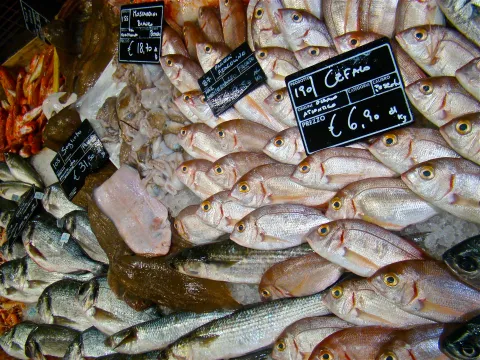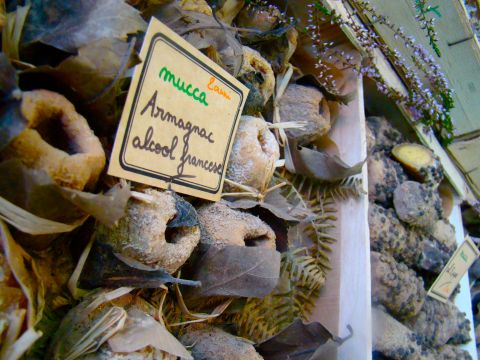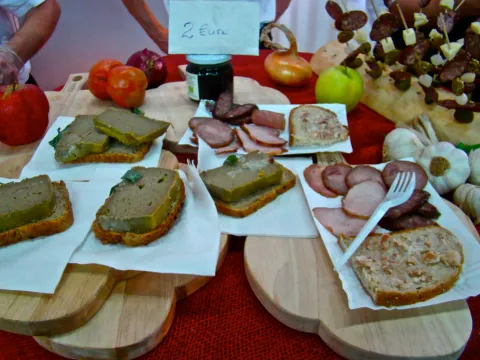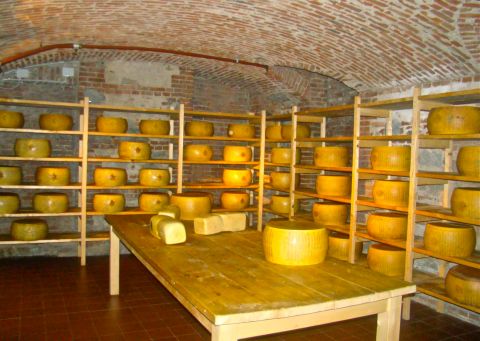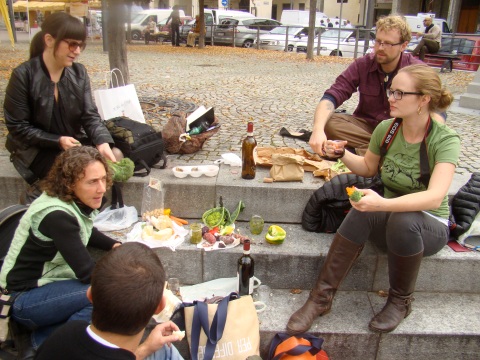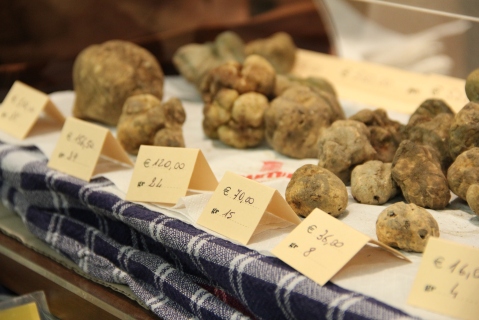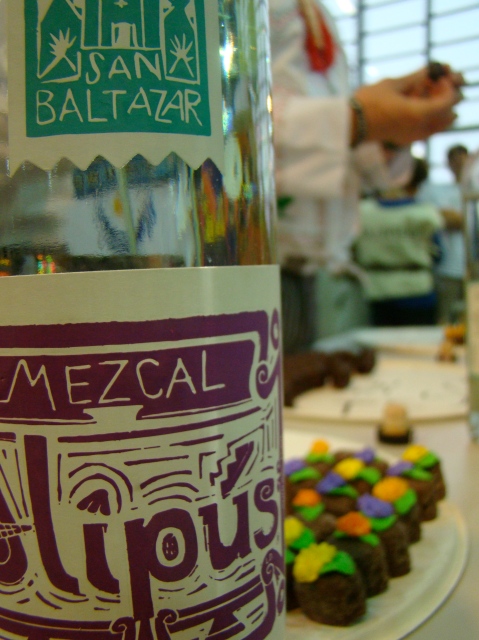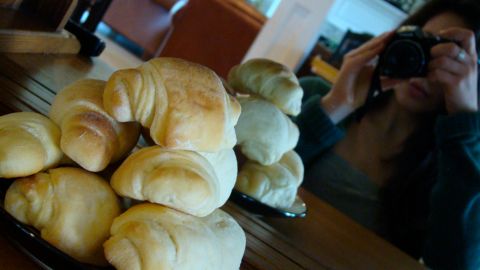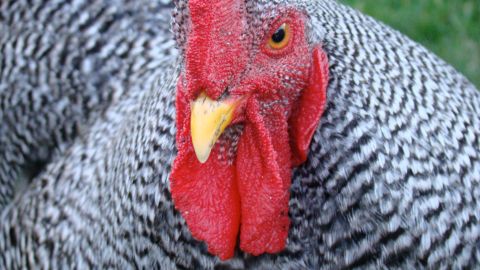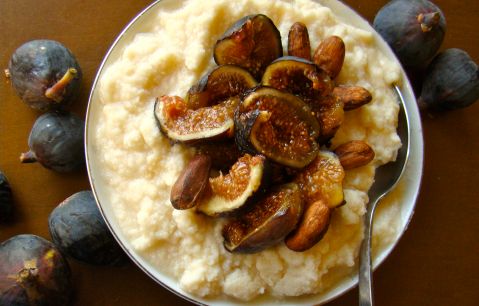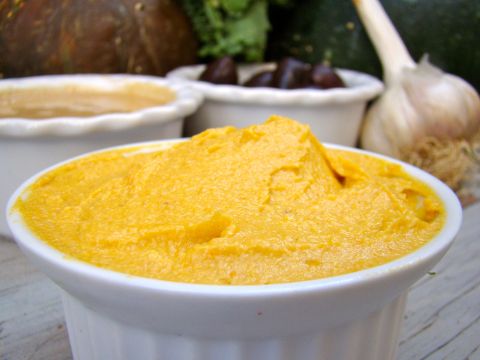Slow Food’s Terra Madre: Regional Cuisine
June 13, 2013 § 1 Comment
Regional cuisine is a concept that should be no surprise to anyone; after all, food (like humans, animals and microbiota) is as unique as the place that it came from. Globally, food cultures exist by region, state, city, neighborhood and family. In October I was lucky enough to serve as an International Delegate at Slow Food International’s biannual Terra Madre conference held in Turin, Italy. Like the United States, and virtually everywhere else on earth, Italy’s regional cuisine varies based on geography.
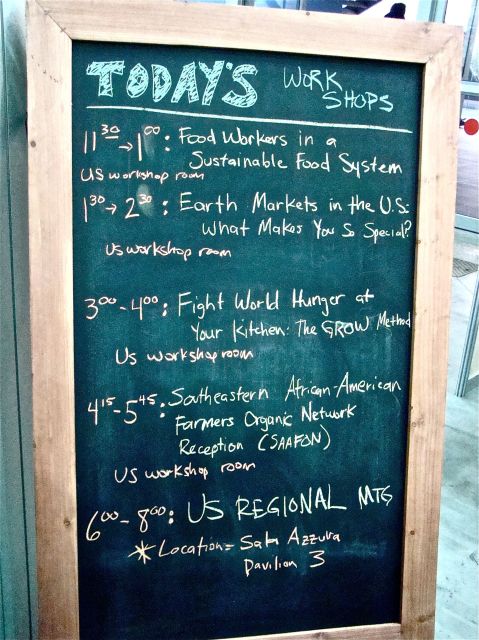 Terra Madre, a food-centric celebration with over one hundred-thirty countries, was insane; the entire experience a revelation. It was there that the concept of eating traditional foods – that are whole, nourishing, adhere to cultural culinary practices and that protect and restore communities and their surrounding environments – really began to resonate with me.
Terra Madre, a food-centric celebration with over one hundred-thirty countries, was insane; the entire experience a revelation. It was there that the concept of eating traditional foods – that are whole, nourishing, adhere to cultural culinary practices and that protect and restore communities and their surrounding environments – really began to resonate with me.
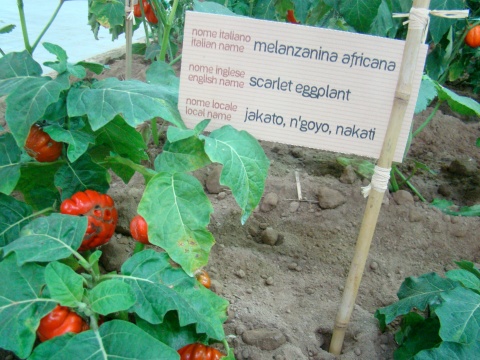 Rich cured meats, pungent fermented cheeses, smoked fish, organ pates, heirloom vegetables, saccharine desserts and glutenous breads are just a few nourishing traditions I encountered. With Terra Madre comes Salone del Gusto. Salone del Gusto is a concentration of Italian regional specialties spread throughout a refurbished Fiat factory in Turin. Below you’ll see two men carrying a heavily marbled cured specimen (possibly salami or bresaola) spanning at least fifteen-feet. I’m convinced that one must be in Italy to see such a sight. Along with the cured meets, Italian desserts populated nearly every region represented at the gathering. Rhode Island (my home) has a robust Italian population, much of which inhabits our capital city’s gem, Federal Hill, the home of exceptional Italian food. I’ve tasted some delicious cannoli, a Silician pastry, but never anything like the little tubes of sheep’s milk ricotta that I tried at Salone del Gusto.
Rich cured meats, pungent fermented cheeses, smoked fish, organ pates, heirloom vegetables, saccharine desserts and glutenous breads are just a few nourishing traditions I encountered. With Terra Madre comes Salone del Gusto. Salone del Gusto is a concentration of Italian regional specialties spread throughout a refurbished Fiat factory in Turin. Below you’ll see two men carrying a heavily marbled cured specimen (possibly salami or bresaola) spanning at least fifteen-feet. I’m convinced that one must be in Italy to see such a sight. Along with the cured meets, Italian desserts populated nearly every region represented at the gathering. Rhode Island (my home) has a robust Italian population, much of which inhabits our capital city’s gem, Federal Hill, the home of exceptional Italian food. I’ve tasted some delicious cannoli, a Silician pastry, but never anything like the little tubes of sheep’s milk ricotta that I tried at Salone del Gusto. 

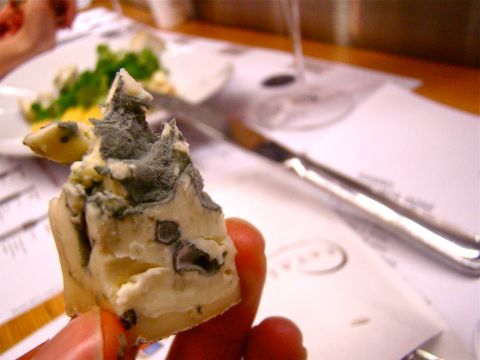

 Between constructive workshops and meetings, a handful of delegates explored Alba’s annual white truffle festival. While in Alba we were submerged in the slow food culture that makes Italy so appealing . At a humble market nestled between the town’s church and several cafes we bought some of the highest quality food I’ve ever tasted and sat in the piazza enjoying our findings.
Between constructive workshops and meetings, a handful of delegates explored Alba’s annual white truffle festival. While in Alba we were submerged in the slow food culture that makes Italy so appealing . At a humble market nestled between the town’s church and several cafes we bought some of the highest quality food I’ve ever tasted and sat in the piazza enjoying our findings. 
 Terra Madre was a clash of all things culturally relevant; traditions, environment, family, religion, livelihood, art and education. And, it’s especially important to note that food was the conduit that connected such diverse people from every corner of the earth.Only through Slow Food. Sometimes I miss the important things because I’m rushing off to accomplish something else. Sound familiar? If so let food act as the anchor that grounds you, that slows you down. As you grow, prepare, cook and share food realize, as I did at Terra Madre, that food not only nourishes our cells, but also feeds our soul.
Terra Madre was a clash of all things culturally relevant; traditions, environment, family, religion, livelihood, art and education. And, it’s especially important to note that food was the conduit that connected such diverse people from every corner of the earth.Only through Slow Food. Sometimes I miss the important things because I’m rushing off to accomplish something else. Sound familiar? If so let food act as the anchor that grounds you, that slows you down. As you grow, prepare, cook and share food realize, as I did at Terra Madre, that food not only nourishes our cells, but also feeds our soul.
Lion House Rolls
November 19, 2012 § 4 Comments
A love affair? Maybe, but I guess I justify it since it only happens once a year. And, like me, you won’t believe you made these pudgy little suckers, nor will your guests. Yes, I know, bread is not exactly nourishing, but smothered with ghee or creamy butter, it sure is a perfect indulgence once and a while (i.e. once a year at Thanksgiving). Lion House rolls are heaven. This is not my recipe but I’ve adopted it, made them the last three years and I must say, if every family chef made these buttery babies, we’d never have to rely on Pillsberry for pokable perfection ever again.
If you’re a visual learner, watch this Lion House video and get to swingin’ your dough!
In the large bowl of an electric mixer, combine the water and the dry milk, stirring until everything is dissolved. Add the yeast to the mixture while milk mixture is still warm. Proof the yeast (let it dissolve and start to react before adding anything else) for a couple of minutes then add the sugar, salt, butter, egg and only 2 cups of the flour.
Mix on low speed until ingredients are wet and shaggy; turn to medium speed and mix for 2 minutes. Stop the mixer and add 2 more cups of flour (total of 4 cups added at this point). Mix on low speed until the ingredients are wet, then turn mixer on medium speed and mix for 2 minutes.
At this point, the dough will be stiff. Remove the bowl from the mixer and knead in the remaining flour by hand.
Add approximately 1/2- 1 cup of flour and knead. The dough should be soft, not overly sticky, and not stiff. Note: It’s not necessary to use the all of the 5 1/2 cups of flour.
Scrape the dough off the sides of the bowl. Coat the sides of the bowl with 1 tablespoon of extra virgin olive oil. Turn the dough over, keeping it in the bowl, so it is covered with the oil. Coating the dough with oil ensures moisture won’t escape. Cover the bowl with a small towel and allow it to rise in a warm place until it has doubled in size.
You want to cut the rectangle into smaller rectangles that are 2″ by 4″. If you make and “L” with your thumb and pointer finger, as it shows in the video, that will yield the right width and height to cut the rectangles.
Roll or flip them (like in the video) and place them on greased baking pans with the end of the roll resting on the pan. Cover with a towel so they don’t dry out as they rise. Let them rise until they double in size; this usually takes about an hour to an hour and a half (in a warm kitchen).
When they’ve risen, bake at 375 degree Fahrenheit for 15 to 20 minutes, or until they’re golden brown. Serve immediately. Leftovers (although there probably won’t be any) can be frozen- they make a great base for bread pudding!
Coconutmeal: A New Take on Oatmeal
November 7, 2012 § 4 Comments
Fall is nearly over; the leaves have hit the ground, filling the air with the saccharine scent of decomposition. Long walks in the ginseng-scented woods yield hens and chickens hiding on rotting trees, dilapidated bikes and a flush that rouges my cheeks. Against the setting sun the tips of the barren trees look like black lace. Once the sun is gone, the air is silent and chilling. I was lucky enough to catch some glimpses of Rhode Island’s color before it was wiped away by the brazen winds of hurricane Sandy.
The lack of warmth and daylight at this time of the year instigates (for me at least) a craving for craze sweets, breads and hearty roasts (all things I hardly ever eat). However, now more than ever it’s imperative to really dig in and feed our body things that will nourish it.
With the length of the days rapidly decreasing we can all feel winter’s threat; naturally most of us go into hibernation mode. Comfort food keeps us warm, but unfortunately many of the dishes we’ve come to know as our favorites are not exactly the best fuel for keeping us healthy. As I’m sure you know (and have read on every health-related website), whole foods (aka foods with only one ingredient in the ingredient list) are the fuel our body needs and craves. When we’re hungry, tired and stressed (common feelings for this time of the year, are they not?) we tend to make food choices that don’t benefit us. Then we’re forced to deal with the consequences of our poor food choices when we feel lethargic or get sick. Everything we put in our bodies matters, yes, every little thing.
I said all of that to say this; coconut flour is not only satiating with its high fiber, protein and fat content, but is also delicious. Coconut is indulgent and nourishing at its core and this flour proves it. Coconut flour can be used to make cookies, cakes, waffles, pancakes, tarts, “oat”meal and may be a substitute for flour when thickening sauces. But, because coconut flour holds water so well, there are some adjustments that need to be made. When using 100% coconut flour, for every one cup used, 4 eggs should be added to the recipe. By the way, coconut flour is gluten-free so consider experimenting with it if you’re cooking for someone with an intolerance.
This recipe can be made many ways, my favorite is just the fragrant coconut flour, a pinch of stevia and some hot water, but adding coconut milk (cream) an egg and vanilla extract makes for a heavier, more custard-like dish. Below I’ll provide both recipes. Experiment and enjoy!
Coconut Flour “Oat”meal
My Favorite way:
(makes one hearty vegan, gluten-free serving)
1/4 cup raw, organic coconut flour, 1 tsp organic powdered stevia, about 1 cup of hot water and fruit, nuts and nut butters for topping with cinnamon, cardamom and/or cacao powder for spicing
In a bowl mix coconut flour and stevia. Add hot water 1/2 cup at a time, mixing as you add the water. The coconut flour requires a lot of water, but to avoid making your “oat”meal too watery taste it as you go. I like mine on the drier, less soupy side.
Traditional way:
(makes one hearty gluten-free serving)
1/4 cup coconut flour, 3/4 cup water, 1/4 cup coconut cream or milk, 1 egg, 1 tsp stevia or other sweetener, 1/2 tsp organic vanilla extract and fruit, nuts and nut butters for topping with cinnamon, cardamom and/or cacao powder for spicing
In a small sauce pan mix coconut flour, water and cream over medium heat until there are no clumps of flour. Add the egg. Immediately mix so the egg doesn’t cook. Continuously stir the mixture while you add vanilla extra, stevia and any desired spices. Top with something delicious and serve while warm.
More on Turin and Terra Madre to come. But for now, enjoy your “oat”meal.
A Short Time in Santorini, Greece
October 9, 2012 § 1 Comment
For those of you who don’t like to read (or don’t like to read my writing) this post is for you. Santorini was bittersweet. It was the last island we visited, so to maximize what we saw, we spent our time AVT-ing around the island. Unfortunately, I accidentally deleted some of our (Shann and my) best pictures of Oia, so most of these picture are from Thira, the island’s main town. But, Oia was like nothing I’ve ever seen; a small city crowded with cafes, restaurants, eclectic art shops, homes of locals and (my highlight) an aged Greek woman selling plump figs. My favorite part of the town was Ammoudi bay, a hidden inlet at the base of steep rocks that separated the village from the ocean. Ammoudi bay was dotted with seafood restaurants selling the freshest fish imaginable, bright boats, electric blue water and an incomparable view of the sunset.
Anyway, I’ll stop now. Keep in mind that Santorini was, at one point, a volcano. Enjoy the pictures.
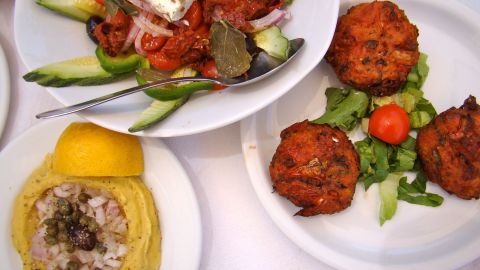
Here, at “Moma’s”, we had fava dip with capers, fried tomato balls and the infamous Santorini salad (like a Greek salad with no greens and lots of capers).
Exactly two weeks until I’m in Turino, Italy savoring Slow Food’s international Terra Madre conference! IF you have any tips or suggestions for what I should see while visiting the Piemonte (foot of the mountain in Italian) region please let me know.
Sugar Pumpkin “Hummus”
October 6, 2012 § 2 Comments
This is going to be quick; no convincing, no nutrition information or wordy phrases (sorry Paul) and it’s mainly because every second spent doing something other than studying alpha helices, beta-pleated sheets and amino acids seems kind of, I don’t know, unproductive. BUT we all have to eat so I might as well share one of my recent favorites.
I know, why didn’t we think of this before? Anyways, this can be used as a dip, a spread, a body mousse or a dressing and, can be made with other fleshy winter squash, nut/seed butters and spices. With that said, this lightly spiced pumpkin-tahina combo has been my favorite thus far.
I do have to mention that a creamy tahina (also know as tahini but I have had trouble calling it that since hearing Israelis throatily proclaim it tah-hina as if it’s a goddness of some sort) and pungent garlic are necessary here (since they are really the only ingredients). Cumin, sumac, nutmeg, black pepper, paprika or a touch of cayenne would certainly lend some character, but here is the base, you do the rest. Also, I will give the recipe for homemade tahina, which is by far the strongest and most satisfying, but you can certainly fine some decent tahina around.
Oh by the way, I was joking about the body mousse thing…
Sugar Pumpkin “Hummus”
Hummus: 2 cups of sugar pumpkin puree*, 1/3 cup tahina, 2 cloves raw garlic, about 2 Tbsp extra virgin olive oil and fine grain sea salt to taste.
*Roast a large, gutted pumpkin at 375 degrees Fahrenheit for 45 minutes or until soft then scape out the flesh. In a food processor, or blender pulse the pumpkin until sooth. 15oz of organic canned pumpkin works as well.
Tahina: 2 cups hulled sesame seeds, 1/3 cup extra virgin olive oil or sesame seed oil and 1/4 tsp sea salt (or more to taste)
In a skillet, toast the sesame seeds one cup at a time until light brown and fragrant. In a food processor pulse the toasted seeds until they form a fine meal. Add the salt. While running the food processor, add olive oil in a stream, processing for about 15 seconds. Pour the tahina into a bowl and mix with a fork until there are no dry lumps. Taste and season with more salt if necessary.
Note: Freshly milled tahina can be stored in a mason/bell jar in the refrigerator for approximately 2 weeks.
In a bowl combine the pumpkin puree, tahina and olive oil. Mix until fully combine. Press (with a garlic press) or chop the garlic then add it to the pumpkin mixture. Mix well, and season with salt or desired spices. Refrigerate until ready to serve.
This recipe makes about 4 servings. It can be kept refrigerated in an airtight container for 4 days, but I guarantee it won’t last that long.


